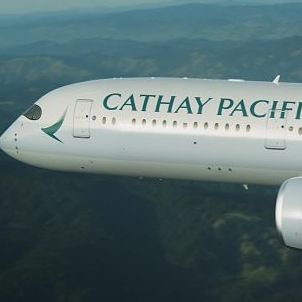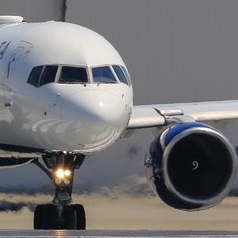You'd pull for OPEN DES if you're in a hurry.
Yes, that makes sense of course. I get worried though when, having gone over to OP DES from DES, the XP a/c can get to -5000ft/min, or even more. Then the speed starts climbing of course - adding drag is no help then. How does that compare to real-world, is it a 'fault' in the sim, or can engaging OP DES cause such a high descent rate in the real plane; if so, what do you do to reduce it? Go to V/S??
Do you really want to go "heads down" at low altitude in busy airspace?
We basically never adjust speed constraints via MCDU during descent. It is usually faster and you have more precise control when you do it through FCU speed selection. One exception is the SPD LIM point which is 250/10000 by default, in case ATC wants us to go fast we might change it to 250/5000 or similar to get proper profile calculations if we continue 250+ knots below 10000 feet.
Absolutely: that is just as true in the sim, and the main reason I tend not to adjust parameters via the FMC, unless it is at cruise altitude, say, and there's not much happening.
As for dummy waypoints, maybe they are more helpful in the sim than real-world, but they certainly make the ATC instructions more timely (and I usually do get enough level segments to make any necessary adjustments to my airspeed). But that's just a PC programming thing of course.
Just descend at 290, level off at 10000 and hit the brakes (he’ll fly right by).
I am sure I've done that before.. I'll give it another try LOL. The Toliss A319/321 at least should do more or less what the real plane would do. (My a320 is great but not quite at that level of realism).
But as others have also said, there is no absolute right way to do things and handle profile. Every approach is different and requires different actions from the pilot.
Exactly, and as I said above, I am fairly happy that I do that in my simulated flights.
Great input again, thank you once more. My original question really was about FMC speed restraints being so high just a few hundred feet above FL100/250kts, but more stuff has come up. Most interesting for someone like me who has a passion for flying these planes but is restricted to a home simulator! Luckily, some of the best payware mimics the real aircraft very closely.
(I remember, back in the days when such things happened, British Airways recruitment staff visiting my school, asking boys (it was an all boys school) if anyone was interested in training with BA to become a pilot. I put my name down, but ended up sticking to 'Plan A' (university) in the end! So I guess I could have been flying these aircraft for real had I made different choices. No regrets though!).





